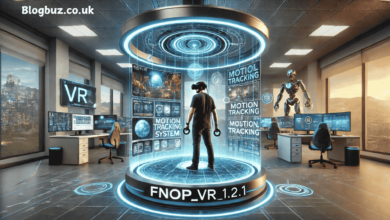Oprekladač: Unlocking the Power of Translation in the Digital Age

In today’s globalized world, the ability to communicate across languages is more important than ever. Whether you’re a business expanding into new markets, a traveller exploring new cultures, or a student learning a foreign language, translation plays a crucial role in bridging communication gaps. The Czech term oprekladač, meaning “translator,” encompasses both the human and technological means of translating languages. This article explores the various facets of oprekladač, including its types, applications, challenges, and the evolving role of technology in translation.
Understanding Oprekladač
Definition and Origin
The word oprekladač is derived from the Czech language, where “překladač” means “translator.” In essence, it refers to any tool or individual that translates written or spoken text from one language to another. While traditional translators were human experts, the digital age has brought forth a wide array of technological translators, ranging from simple mobile apps to sophisticated AI-powered platforms.
Types of Oprekladač
- Human Translators: Professional translators who possess expertise in specific languages and often specialize in fields such as legal, medical, or technical translation.
- Machine Translators: Software and applications that use algorithms to convert text from one language to another. Popular examples include Google Translate, Microsoft Translator, and DeepL.
- Hybrid Systems: Combining human expertise with machine efficiency, hybrid systems leverage technology to enhance the accuracy and speed of translations while retaining human translators’ nuanced understanding.
The Role of Oprekladač in Various Fields
Business and Commerce
- Market Expansion: Companies looking to enter international markets rely on oprekladač to localize their content, ensuring that marketing materials, product descriptions, and websites are culturally relevant and linguistically accurate.
- Cross-Border Communication: Effective communication with partners, clients, and customers across language barriers is essential for successful business operations. Translation services enable seamless interactions and negotiations.
Education
- Language Learning: Oprekladač serves as a valuable tool for language learners, providing translations of vocabulary and phrases that aid in the acquisition of new languages.
- Academic Research: Access to research papers and educational resources in different languages broadens the scope of scholarly inquiry and fosters global collaboration.
Travel and Tourism
- Communication: Travelers use translation apps to communicate with locals, navigate unfamiliar environments, and gain a deeper understanding of the cultures they encounter.
- Cultural Exchange: By breaking down language barriers, oprekladač facilitates cultural exchange and enhances the travel experience.
Technology and Innovation
- Artificial Intelligence: Advances in AI have revolutionized translation, enabling real-time speech translation and context-aware translations that adapt to user needs.
- Machine Learning: Continuous learning algorithms improve translation accuracy over time by analyzing vast amounts of multilingual data.
The Challenges of Translation
While oprekladač offers numerous benefits, it also faces challenges that must be addressed to ensure effective and accurate translations.
Linguistic Nuances
Languages are complex systems with unique grammar, idioms, and cultural references. Translating text accurately requires an understanding of these nuances to convey meaning accurately.
Cultural Sensitivity
Cultural differences can significantly impact the interpretation of text. Translators must be mindful of cultural context to avoid misunderstandings or offending the target audience.
Quality Assurance
Ensuring the quality of translations is essential, especially in critical fields such as legal and medical translation. Human oversight and review are often necessary to verify accuracy.
The Evolution of Translation Technology
From Rule-Based Systems to AI
Early translation systems relied on rule-based algorithms, which had limitations in handling complex linguistic structures. Modern AI-powered translators use neural networks and machine learning to provide more accurate and context-aware translations.
Real-Time Translation
Innovations in speech recognition and natural language processing have enabled real-time translation, allowing users to have conversations across languages without delays.
Contextual Understanding
Advanced translators can analyze the context of a conversation or text to provide translations that are not only accurate but also relevant to the specific situation.
The Future of Oprekladač
Integration with Augmented Reality
Augmented reality (AR) technology holds the potential to revolutionize translation by overlaying translated text onto the real world, making it easier for users to understand signs, menus, and documents.
Personalized Translation Experiences
As AI continues to evolve, translation systems will become more personalized, adapting to individual users’ preferences, language proficiency, and communication styles.
Breaking Down Language Barriers
The ultimate goal of oprekladač is to break down language barriers and facilitate seamless communication between people of different linguistic backgrounds. As technology advances, the dream of a truly interconnected global community becomes increasingly attainable.
Conclusion
Oprekladač plays a pivotal role in the modern world, enabling communication across languages and cultures. From business and education to travel and technology, translation is a cornerstone of global interaction. As technology continues to evolve, the capabilities of oprekladač will expand, offering new opportunities for collaboration, understanding, and cultural exchange. Whether you’re a professional translator or a casual user, the power of translation is at your fingertips, transforming the way we connect with the world around us.
FAQs on Oprekladač
What is an oprekladač?
An oprekladač is a Czech term for a translator, which can refer to either a human translator or a technological tool used to translate text or speech from one language to another.
How do online translators work?
Online translators use algorithms and machine learning models to analyze text input and provide translations in the target language. Advanced systems use neural networks to improve accuracy and contextual understanding.
How accurate are machine translators?
Machine translators have improved significantly with advances in AI, but they may still need help with complex sentences, idioms, and cultural nuances. Human oversight is often required for critical translations.
What are the benefits of using a translator?
Translators facilitate communication across language barriers, enable businesses to reach global markets, assist travellers, support language learning, and promote cultural exchange.
What challenges do translators face?
Translators face challenges such as understanding linguistic nuances, ensuring cultural sensitivity, maintaining translation quality, and adapting to evolving technology.
You May Also Read: DL10Compare: Revolutionizing Decision-Making with AI




